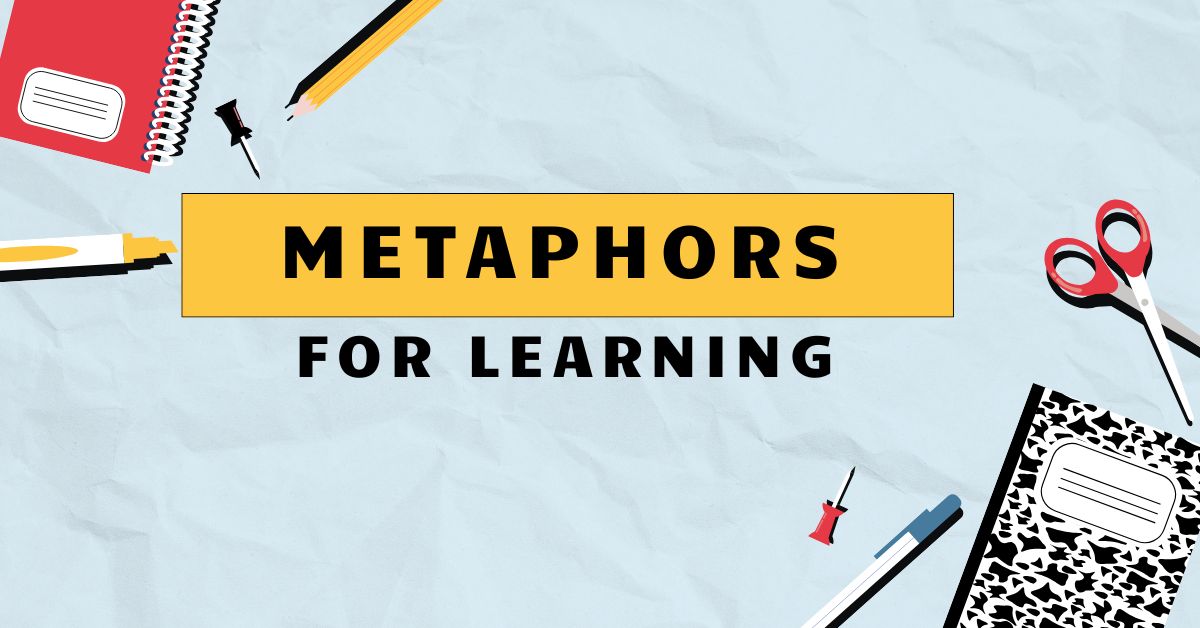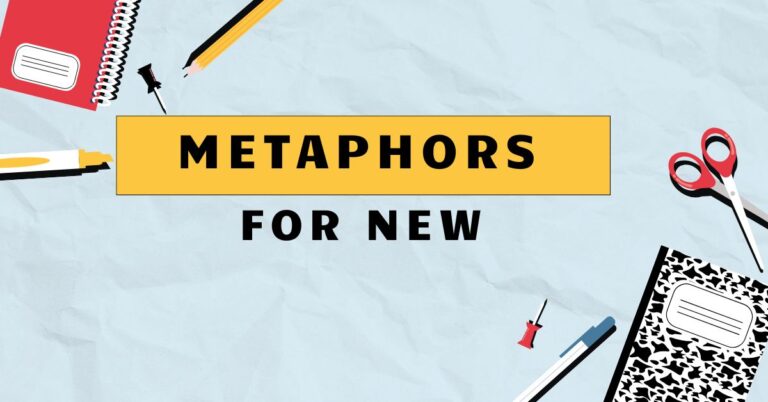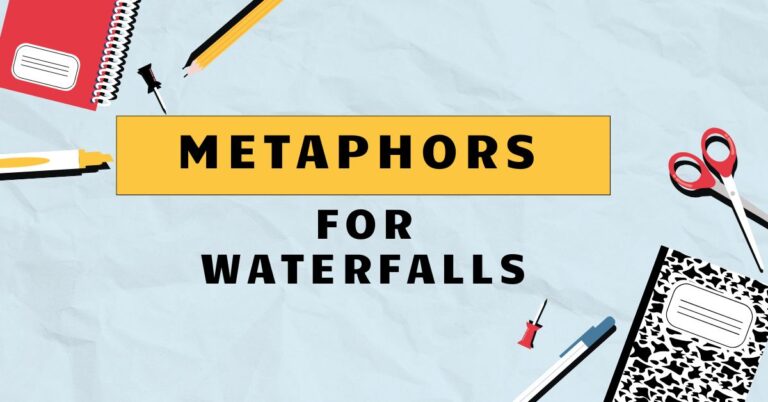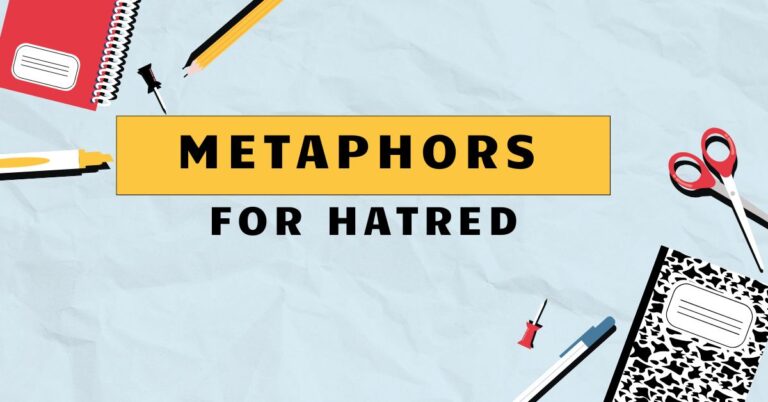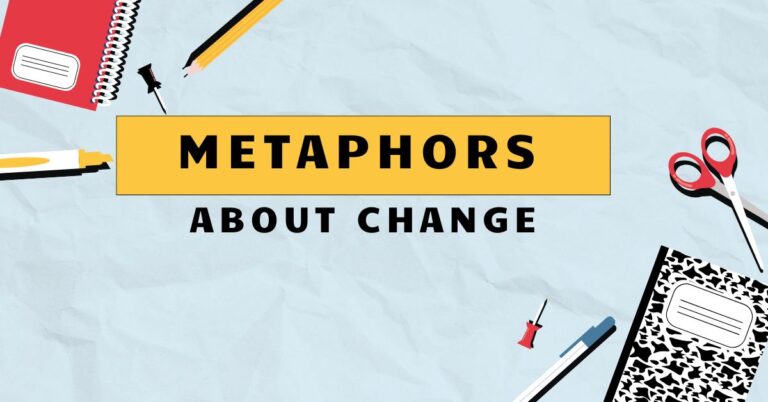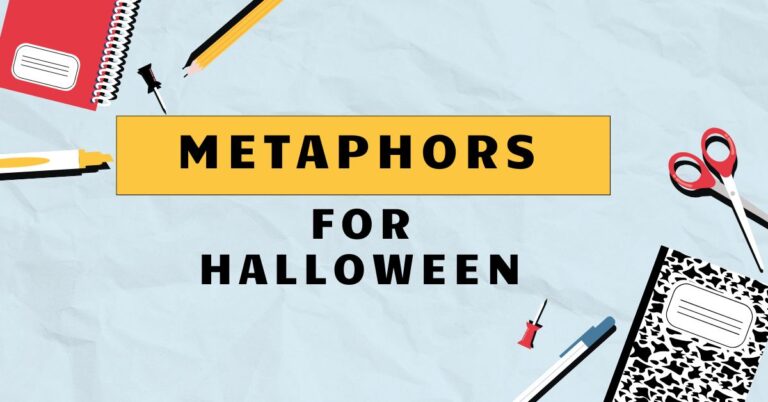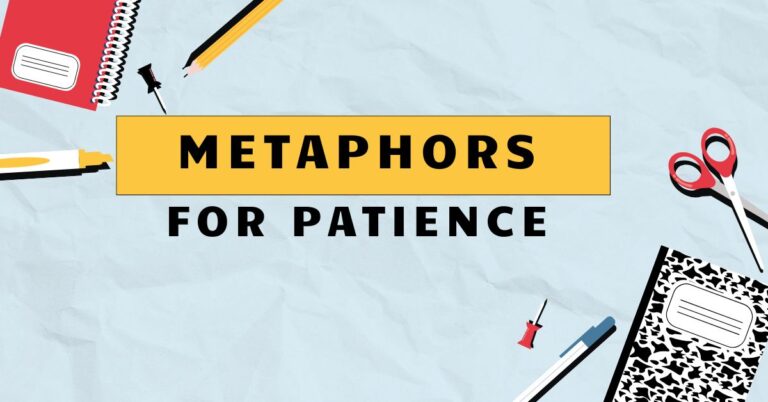36 Learning as a Journey: Exploring Metaphors in Education
Metaphors are powerful tools that shape our understanding of abstract concepts, and learning is no exception. By framing learning as a journey, a building process, or even a game, we can tap into intuitive understandings that enhance motivation, comprehension, and retention.
This article explores the rich landscape of metaphors for learning, providing a comprehensive guide to their use and impact. Whether you’re a student, educator, or simply a lifelong learner, understanding these metaphors can unlock new perspectives and improve your learning experience.
Table of Contents
- Introduction
- Definition of Metaphors for Learning
- Structural Breakdown of Learning Metaphors
- Types and Categories of Learning Metaphors
- Examples of Metaphors for Learning
- Usage Rules for Metaphors in Educational Contexts
- Common Mistakes When Using Learning Metaphors
- Practice Exercises
- Advanced Topics in Learning Metaphors
- Frequently Asked Questions
- Conclusion
Definition of Metaphors for Learning
A metaphor for learning is a figure of speech that describes the process of acquiring knowledge and skills by comparing it to something else, typically something more concrete or familiar. It’s not a literal comparison, but rather a way to understand learning through the lens of another experience.
These metaphors can influence how we approach learning, the strategies we employ, and our overall mindset. By framing learning in a particular way, metaphors can highlight certain aspects of the process while downplaying others.
Metaphors used in education serve as powerful cognitive tools. They can simplify complex ideas, making them more accessible and memorable.
These metaphors also shape our perceptions of learning, influencing our expectations, motivations, and emotional responses. A metaphor can either empower or discourage, depending on its nature and how it resonates with the individual learner.
These tools enable educators to communicate complex ideas in a simpler way.
The function of metaphors in the context of learning is multifaceted. They can act as motivators, providing a sense of purpose and direction.
They can serve as frameworks for understanding, helping learners organize new information and connect it to existing knowledge. Metaphors can also be used to foster creativity and innovation by encouraging learners to think outside the box and explore new perspectives.
In educational settings, metaphors serve as a bridge between abstract concepts and concrete understanding, enhancing engagement and comprehension.
Structural Breakdown of Learning Metaphors
The structure of learning metaphors typically involves two key components: thesource domainand thetarget domain. The source domain is the familiar concept or experience that is used to explain the target domain, which in this case is the process of learning.
For example, in the metaphor “learning is a journey,” the source domain is “journey” and the target domain is “learning.” The metaphor works by mapping certain characteristics of the source domain onto the target domain.
In the “learning is a journey” metaphor, characteristics such as progress, challenges, milestones, and destinations are mapped onto the learning process. This allows learners to understand their educational path as a series of steps, each with its own set of obstacles and rewards, ultimately leading to a specific goal.
The effectiveness of a metaphor depends on the clarity and relevance of the mapping between the source and target domains.
The structural elements of a metaphor also include theground, which refers to the shared attributes or similarities between the source and target domains. The ground is what makes the metaphor meaningful and allows it to resonate with learners.
A well-chosen metaphor will have a strong ground, making the connection between the two domains clear and intuitive. Consider the metaphor “learning is building a house.” The ground includes elements like planning, laying a foundation, constructing walls, and adding finishing touches.
These shared attributes provide a framework for understanding the learning process as a step-by-step construction.
Types and Categories of Learning Metaphors
Learning metaphors can be categorized based on the particular aspect of learning they emphasize. Here are some common categories:
The Journey Metaphor
This is perhaps the most prevalent metaphor for learning. It emphasizes the process of moving from a starting point to a destination, encountering challenges and gaining experience along the way.
It highlights the importance of perseverance, exploration, and the gradual accumulation of knowledge.
The Building Metaphor
This metaphor focuses on the construction of knowledge, emphasizing the importance of a strong foundation, careful planning, and the gradual addition of new layers of understanding. It highlights the interconnectedness of different concepts and the need for a solid framework.
The Game Metaphor
This metaphor frames learning as a playful and engaging activity, emphasizing the importance of rules, challenges, rewards, and competition. It highlights the potential for learning to be enjoyable and motivating.
The Growth Metaphor
This metaphor views learning as a natural process of development and maturation, emphasizing the importance of nurturing, patience, and the gradual unfolding of potential. It highlights the idea that learning takes time and requires the right conditions.
The Light Metaphor
This metaphor depicts learning as a process of illumination and enlightenment, emphasizing the dispelling of darkness and the gaining of clarity. It highlights the transformative power of knowledge and the ability to see the world in a new way.
Examples of Metaphors for Learning
Here are some extensive examples of learning metaphors, categorized by type. Each table provides numerous illustrations of how these metaphors are used in different contexts to describe the learning process.
These examples will help you understand the variety and richness of metaphorical language in education.
The table below showcases different examples of the Journey Metaphor. This metaphor is commonly used to frame learning as a process of exploration and discovery, with its own set of challenges and milestones.
Each example illustrates how the journey metaphor can be applied to various aspects of education and personal growth.
| Metaphor | Explanation |
|---|---|
| “My education is a long and winding road.” | Emphasizes the unpredictable and often circuitous nature of learning. |
| “She’s embarking on a new chapter in her academic journey.” | Highlights the beginning of a significant learning phase. |
| “He’s reached a crossroads in his career path.” | Suggests a critical decision point in his professional development. |
| “The course was a challenging trek through unfamiliar territory.” | Portrays the course as difficult and requiring exploration. |
| “Learning this new skill is like climbing a steep mountain.” | Illustrates the effort and perseverance required to master the skill. |
| “Education is a voyage of discovery.” | Highlights the exploratory and enlightening aspects of learning. |
| “My studies are a pilgrimage to a deeper understanding.” | Suggests a dedicated and purposeful pursuit of knowledge. |
| “The project was a journey into the unknown.” | Emphasizes the uncertainty and potential for discovery in the project. |
| “His career is a path filled with unexpected turns.” | Portrays his career as unpredictable and full of surprises. |
| “Learning is like navigating a complex maze.” | Illustrates the challenges and problem-solving required in learning. |
| “The seminar was a guided tour through the latest research.” | Presents the seminar as an informative and structured exploration. |
| “Her education is a quest for knowledge.” | Highlights the purposeful and ambitious nature of her learning. |
| “The workshop was a journey of self-discovery.” | Emphasizes the personal growth and insight gained from the workshop. |
| “His learning curve was a steep climb.” | Portrays the rapid and challenging nature of his learning. |
| “Education is a journey without a final destination.” | Suggests that learning is a continuous and ongoing process. |
| “Each lesson is a step forward on the path to mastery.” | Illustrates how each lesson contributes to overall skill development. |
| “The degree is a milestone in her academic journey.” | Highlights the achievement and progress marked by the degree. |
| “His research is a deep dive into the subject matter.” | Emphasizes the thorough and in-depth nature of his research. |
| “University is the next stop on my life’s journey.” | Illustrates the transition to higher education as the next step in life. |
| “Learning is an uphill battle, but the view from the top is worth it.” | Highlights the challenges of learning and the rewards of perseverance. |
| “The course is designed to be a scenic route through the fundamentals.” | Presents the course as an enjoyable way to learn basic concepts. |
| “Her career took a detour when she decided to pursue a master’s degree.” | Illustrates how her career plans changed with further education. |
| “He’s blazing a trail in the field of artificial intelligence.” | Emphasizes his innovative and pioneering work in AI. |
| “The graduate program is a launchpad for future success.” | Portrays the program as a starting point for achieving career goals. |
| “Her education is a treasure hunt for knowledge.” | Highlights the exciting and rewarding aspects of seeking knowledge. |
The next table focuses on the Building Metaphor, portraying learning as a process of constructing knowledge and skills. This metaphor emphasizes the importance of a solid foundation, careful planning, and the gradual addition of new layers of understanding.
These examples show how different aspects of learning can be viewed as building a structure.
| Metaphor | Explanation |
|---|---|
| “My understanding of the topic is built on a strong foundation.” | Emphasizes the importance of basic knowledge for advanced learning. |
| “She’s constructing a solid career through hard work and dedication.” | Illustrates how a career is built over time with effort. |
| “He’s laying the groundwork for a successful business.” | Highlights the initial steps and preparations for a business venture. |
| “The course is designed to build your skills from the ground up.” | Portrays the course as starting with basic skills and progressing to advanced ones. |
| “Learning this new language is like building a house, one brick at a time.” | Illustrates the step-by-step process of language acquisition. |
| “Education is the cornerstone of a successful life.” | Highlights the essential role of education in achieving success. |
| “My knowledge is a tower built over years of study.” | Suggests a long and continuous accumulation of knowledge. |
| “The project is a structure of interconnected ideas.” | Emphasizes the relationships and dependencies between different ideas. |
| “His career is a skyscraper built on ambition and talent.” | Portrays his career as tall and impressive, built on strong qualities. |
| “Learning is like assembling a complex machine.” | Illustrates the process of putting together different components of knowledge. |
| “The seminar provided the framework for my research.” | Presents the seminar as providing a structure and direction for research. |
| “Her education is the scaffolding that supports her career.” | Highlights the supportive role of education in career development. |
| “The workshop helped me construct a new perspective.” | Emphasizes the creation of a new way of thinking. |
| “His learning process is like erecting a building, layer by layer.” | Portrays learning as a gradual and structured construction. |
| “Education is the foundation upon which dreams are built.” | Suggests that education is essential for achieving aspirations. |
| “Each module is a building block in your understanding.” | Illustrates how each module contributes to overall comprehension. |
| “The degree is the capstone of her academic achievements.” | Highlights the culmination and completion of her academic journey. |
| “His research is constructing a new theory in the field.” | Emphasizes the creation of a new theoretical framework. |
| “University is the bedrock for my future career.” | Illustrates the fundamental role of university in career preparation. |
| “Learning is like constructing a bridge to new opportunities.” | Highlights how learning enables access to new possibilities. |
| “The course is designed to be a blueprint for success.” | Presents the course as a guide for achieving desired outcomes. |
| “Her career is cemented by years of experience and education.” | Illustrates the lasting impact of experience and education. |
| “He’s architecting a solution to a complex problem.” | Emphasizes his strategic and creative approach to problem-solving. |
| “The graduate program is the infrastructure for advanced research.” | Portrays the program as providing the necessary support for research. |
| “Her education is a fortress against ignorance.” | Highlights the protective and empowering aspects of knowledge. |
This table provides examples of the Game Metaphor, which frames learning as an engaging and challenging activity with rules, rewards, and competition. These metaphors highlight the fun and motivating aspects of learning, as well as the strategic thinking involved.
Each example demonstrates how learning can be seen as a game with its own set of objectives and challenges.
| Metaphor | Explanation |
|---|---|
| “Learning is a game of strategy and skill.” | Emphasizes the need for planning and competence in learning. |
| “She’s playing the game of academia with great success.” | Illustrates her successful navigation of the academic environment. |
| “He’s leveling up his skills through continuous practice.” | Highlights the progression and improvement through practice. |
| “The course is designed to be a challenging game of problem-solving.” | Portrays the course as an engaging and difficult problem-solving activity. |
| “Learning this new concept is like solving a complex puzzle.” | Illustrates the need for critical thinking to understand new ideas. |
| “Education is the ultimate game-changer in life.” | Highlights the transformative impact of education. |
| “My studies are a series of challenges to overcome.” | Suggests that learning involves facing and conquering difficulties. |
| “The project is a competition against the limits of knowledge.” | Emphasizes the ambition to push the boundaries of understanding. |
| “His career is a high-stakes game of innovation.” | Portrays his career as competitive and requiring creativity. |
| “Learning is like navigating through a virtual reality game.” | Illustrates the immersive and interactive nature of modern learning. |
| “The seminar is a strategic playbook for career advancement.” | Presents the seminar as providing tactics for professional growth. |
| “Her education is the key to unlocking future opportunities.” | Highlights the empowering role of education in opening doors. |
| “The workshop helped me master the rules of the game.” | Emphasizes the importance of understanding principles and guidelines. |
| “His learning process is like playing a chess game, move by move.” | Portrays learning as a thoughtful and strategic progression. |
| “Education is the playing field where success is earned.” | Suggests that education provides the opportunity to achieve success. |
| “Each assignment is a challenge to test your skills.” | Illustrates how assignments assess and develop abilities. |
| “The degree is the ultimate victory in the academic arena.” | Highlights the achievement and triumph of earning a degree. |
| “His research is a quest for the holy grail of knowledge.” | Emphasizes the ambition and pursuit of groundbreaking discoveries. |
| “University is the training ground for future leaders.” | Illustrates the preparatory role of university in leadership development. |
| “Learning is like solving a Rubik’s cube of complex problems.” | Highlights the intricate and challenging nature of problem-solving. |
| “The course is designed to be a simulation of real-world scenarios.” | Presents the course as a practical and immersive learning experience. |
| “Her career is a marathon of continuous learning and adaptation.” | Illustrates the long-term commitment required for career success. |
| “He’s gamifying the learning process to make it more engaging.” | Emphasizes the use of game elements to enhance motivation. |
| “The graduate program is a sandbox for experimentation and innovation.” | Portrays the program as a space for creative exploration. |
| “Her education is a power-up for her future endeavors.” | Highlights the empowering and enabling aspects of education. |
This table presents examples of the Growth Metaphor, which views learning as a natural process of development and maturation. This metaphor emphasizes the importance of nurturing, patience, and the gradual unfolding of potential.
These examples illustrate how learning can be seen as similar to the growth of a plant or other living organism.
| Metaphor | Explanation |
|---|---|
| “My knowledge is blossoming with each new lesson.” | Emphasizes the gradual development and flourishing of knowledge. |
| “She’s nurturing her skills through continuous practice.” | Illustrates how skills are developed and cared for over time. |
| “He’s planting the seeds of future success with his education.” | Highlights the initial steps and preparations for achieving future goals. |
| “The course is designed to cultivate your understanding of the subject.” | Portrays the course as fostering and developing comprehension. |
| “Learning this new language is like growing a garden, requiring patience and care.” | Illustrates the need for consistent effort and attention in language acquisition. |
| “Education is the fertilizer that nourishes a successful career.” | Highlights the supportive role of education in career development. |
| “My understanding is deepening like roots growing into the earth.” | Suggests a thorough and profound comprehension. |
| “The project is a seed that has sprouted into a full-fledged research paper.” | Emphasizes the growth and development of the project over time. |
| “His career is blossoming with new opportunities and experiences.” | Portrays his career as thriving and expanding. |
| “Learning is like watching a tree grow, slowly but surely.” | Illustrates the gradual and steady nature of the learning process. |
| “The seminar provided the nutrients for my intellectual growth.” | Presents the seminar as providing essential elements for learning. |
| “Her education is the sunlight that allows her potential to bloom.” | Highlights the enabling and empowering role of education. |
| “The workshop helped me cultivate new habits and perspectives.” | Emphasizes the development of new behaviors and viewpoints. |
| “His learning process is like a plant reaching for the sun, always striving for more.” | Portrays learning as a constant pursuit of knowledge and improvement. |
| “Education is the soil in which dreams take root and grow.” | Suggests that education provides the environment for achieving aspirations. |
| “Each new piece of knowledge is like adding another ring to a tree’s trunk.” | Illustrates how knowledge accumulates over time. |
| “The degree is the fruit of her years of hard work and dedication.” | Highlights the reward and outcome of her efforts. |
| “His research is germinating new ideas in the field.” | Emphasizes the generation and development of innovative concepts. |
| “University is the greenhouse where future leaders are cultivated.” | Illustrates the nurturing and developmental role of university. |
| “Learning is like pruning a tree, removing what’s unnecessary to promote growth.” | Highlights the process of refining and focusing knowledge. |
| “The course is designed to be a fertile ground for new ideas.” | Presents the course as an environment that encourages creativity. |
| “Her career is flourishing with each new project and accomplishment.” | Illustrates the thriving and successful nature of her career. |
| “He’s cultivating a culture of learning in his organization.” | Emphasizes the creation of an environment that fosters education. |
| “The graduate program is a nurturing environment for intellectual growth.” | Portrays the program as supportive and developmental. |
| “Her education is the water that nourishes her intellectual curiosity.” | Highlights the sustaining and enriching aspects of education. |
This table provides examples of the Light Metaphor, which depicts learning as a process of illumination and enlightenment. This metaphor emphasizes the dispelling of darkness and the gaining of clarity.
These examples illustrate how knowledge can be seen as a source of light, revealing truths and providing understanding.
| Metaphor | Explanation |
|---|---|
| “My understanding is dawning with each new insight.” | Emphasizes the gradual realization and illumination of knowledge. |
| “She’s shedding light on complex topics with her clear explanations.” | Illustrates how she clarifies and illuminates difficult subjects. |
| “He’s illuminating the path for future researchers with his discoveries.” | Highlights the guiding and enlightening role of his work. |
| “The course is designed to enlighten you on the mysteries of the universe.” | Portrays the course as providing profound understanding and revelation. |
| “Learning this new concept is like turning on a light bulb in my mind.” | Illustrates the sudden and clear understanding of new ideas. |
| “Education is the beacon that guides us through the darkness.” | Highlights the guiding and protective role of education. |
| “My knowledge is a lamp that illuminates my way forward.” | Suggests that knowledge provides direction and clarity. |
| “The project is a spotlight on the issues facing our community.” | Emphasizes the focus and attention brought to important topics. |
| “His career is shining brightly with achievements and recognition.” | Portrays his career as successful and distinguished. |
| “Learning is like seeing the light at the end of a long tunnel.” | Illustrates the hope and clarity gained through learning. |
| “The seminar provided the spark that ignited my passion for research.” | Presents the seminar as inspiring and motivating. |
| “Her education is the flashlight that helps her navigate the complexities of life.” | Highlights the guiding and supportive role of education. |
| “The workshop helped me see the world in a new light.” | Emphasizes the transformative and enlightening experience. |
| “His learning process is like a lighthouse guiding ships safely to shore.” | Portrays learning as providing guidance and direction. |
| “Education is the light that dispels the darkness of ignorance.” | Suggests that education removes misunderstanding and promotes knowledge. |
| “Each new piece of information is like a ray of sunshine breaking through the clouds.” | Illustrates how new knowledge brings clarity and brightness. |
| “The degree is the culmination of her efforts, shining brightly on her resume.” | Highlights the achievement and recognition gained through education. |
| “His research is illuminating new pathways in the field.” | Emphasizes the discovery and revelation of new approaches. |
| “University is the laboratory where future ideas are illuminated.” | Illustrates the place where future ideas are explored. |
| “Learning is like turning on a switch, suddenly understanding everything.” | Highlights the sudden clarity and comprehension that can come with learning. |
| “The course is designed to be an enlightening journey of self-discovery.” | Presents the course as a transformative and revealing experience. |
| “Her career is illuminated by her passion and dedication.” | Illustrates how passion and dedication contribute to career success. |
| “He’s shedding light on the importance of education in society.” | Emphasizes the value and significance of education. |
| “The graduate program is a spark that ignites innovation and creativity.” | Portrays the program as a catalyst for new ideas. |
| “Her education is the light that guides her towards a brighter future.” | Highlights the empowering and directional aspects of education. |
Usage Rules for Metaphors in Educational Contexts
Using metaphors effectively in education requires careful consideration. Here are some rules to follow:
- Relevance: Choose metaphors that are relevant to the learners’ experiences and backgrounds. A metaphor that resonates with their prior knowledge will be more effective.
- Clarity: Ensure that the metaphor is clear and easy to understand. Avoid overly complex or obscure metaphors that may confuse learners.
- Consistency: Maintain consistency in the use of the metaphor throughout the lesson or course. Switching metaphors abruptly can disrupt the learning process.
- Appropriateness: Select metaphors that are appropriate for the age and developmental level of the learners. A metaphor that works well for adults may not be suitable for children.
- Avoid Overuse: While metaphors can be powerful, overuse can diminish their impact. Use them strategically to highlight key concepts and ideas.
Exceptions to these rules may arise in certain contexts. For example, an advanced learner might appreciate a more complex metaphor that encourages deeper thinking.
Or, in a creative writing class, learners might be encouraged to experiment with unconventional metaphors to explore new perspectives. It’s important to be flexible and adapt your approach based on the specific needs and goals of the learners.
Special cases might involve using metaphors from different cultures to promote cross-cultural understanding. However, it’s crucial to ensure that these metaphors are explained clearly and respectfully, avoiding any potential for misinterpretation or offense.
The key is to be mindful of the potential impact of metaphors and to use them in a way that enhances learning and promotes understanding.
Common Mistakes When Using Learning Metaphors
Several common mistakes can undermine the effectiveness of learning metaphors:
- Mixed Metaphors: Combining incompatible metaphors can create confusion and undermine the message.
- Incorrect: “The path to success is a marathon where you need to build a strong foundation.” (Mixing journey and building metaphors)
- Correct: “The path to success is a marathon that requires endurance and perseverance.”
- Overly Abstract Metaphors: Using metaphors that are too abstract or complex can be difficult for learners to grasp.
- Incorrect: “Learning is a fractal of cognitive dissonance.”
- Correct: “Learning is like piecing together a puzzle, where each piece contributes to the overall picture.”
- Culturally Insensitive Metaphors: Using metaphors that are not culturally appropriate can alienate learners and hinder understanding.
- Incorrect: Using a metaphor based on a specific cultural practice that is unfamiliar to the learners.
- Correct: Using universal metaphors that resonate with a broad range of cultural backgrounds.
- Inconsistent Metaphors: Switching metaphors mid-explanation can confuse learners and disrupt the flow of understanding.
- Incorrect: “Education is a journey, and each lesson is a building block.”
- Correct: “Education is a journey, and each lesson is a step forward.”
- Unexplained Metaphors: Failing to explain the connection between the metaphor and the learning concept can leave learners confused.
- Incorrect: “Learning is a game.” (Without explaining how it relates to the learning process)
- Correct: “Learning is a game, where you need to follow the rules, solve problems, and achieve goals.”
Practice Exercises
Test your understanding of learning metaphors with these exercises:
Exercise 1: Identifying Metaphors
Identify the type of learning metaphor used in each sentence.
| Question | Answer |
|---|---|
| 1. “Education is the key that unlocks your potential.” | Light Metaphor |
| 2. “My career is a ladder I’m climbing one rung at a time.” | Building/Journey Metaphor |
| 3. “Learning is a garden that needs constant tending.” | Growth Metaphor |
| 4. “The course is a treasure hunt for knowledge.” | Journey Metaphor |
| 5. “His mind is a sponge soaking up new information.” | Building Metaphor |
| 6. “Education is the cornerstone of a successful life.” | Building Metaphor |
| 7. “Each lesson is a step forward on the path to enlightenment.” | Journey/Light Metaphor |
| 8. “Learning is a game of strategy and skill.” | Game Metaphor |
| 9. “The seminar was a lightbulb moment for me.” | Light Metaphor |
| 10. “My understanding is blossoming with each new insight.” | Growth Metaphor |
Exercise 2: Completing Metaphors
Complete the following sentences by adding a suitable metaphor for learning.
| Question | Answer |
|---|---|
| 1. “The learning process can be described as…” | a journey of self-discovery. |
| 2. “Gaining knowledge is like…” | building a strong foundation. |
| 3. “Education is often compared to…” | a light that guides us. |
| 4. “Developing new skills is similar to…” | cultivating a garden. |
| 5. “Facing challenges in learning is like…” | playing a challenging game. |
| 6. “His career is like…” | a skyscraper built on ambition and hard work. |
| 7. “Her mind is like…” | a fertile ground for growing new ideas. |
| 8. “My studies are like…” | a quest for deeper understanding. |
| 9. “The seminar was…” | a guiding light in my research. |
| 10. “Learning is…” | climbing a mountain, challenging but rewarding. |
Exercise 3: Creating Your Own Metaphors
Create your own metaphors for the following learning concepts:
| Concept | Your Metaphor |
|---|---|
| 1. Overcoming a difficult challenge in learning | Breaking through a dense fog to see a clear path. |
| 2. The feeling of understanding a complex topic | Finding the missing piece of a jigsaw puzzle. |
| 3. The role of a teacher or mentor | A guide showing the way through a dark forest. |
| 4. The importance of continuous learning | Sharpening a saw to maintain its effectiveness. |
| 5. The process of memorization | Storing valuable items in a treasure chest. |
Advanced Topics in Learning Metaphors
Delving deeper into the use of metaphors for learning reveals more nuanced applications and considerations. Here are some advanced topics:
- Conceptual Metaphor Theory: This theory, developed by George Lakoff and Mark Johnson, argues that metaphors are not just linguistic devices but fundamental structures of thought. Understanding this theory can provide a deeper insight into how metaphors shape our understanding of learning and other abstract concepts.
- The Role of Embodiment: Embodied cognition suggests that our understanding of abstract concepts is grounded in our physical experiences. Metaphors that draw on embodied experiences (e.g., “grasping” a concept) can be particularly effective.
- Cultural Variations in Metaphors: Different cultures may use different metaphors to describe learning. Being aware of these variations can promote cross-cultural understanding and avoid misunderstandings.
- The Use of Metaphors in Instructional Design: Metaphors can be used strategically in instructional design to create more engaging and effective learning experiences. This involves carefully selecting metaphors that align with the learning objectives and the learners’ backgrounds.
- Ethical Considerations: It’s important to be mindful of the potential impact of metaphors on learners’ attitudes and beliefs. Avoid using metaphors that could reinforce negative stereotypes or promote harmful ideologies.
Exploring these advanced topics can help educators and learners alike to use metaphors more thoughtfully and effectively, unlocking their full potential as tools for understanding and growth.
Frequently Asked Questions
Conclusion
Metaphors are powerful tools for understanding and communicating complex ideas, especially in the realm of learning. By framing learning as a journey, a building process, a game, a growth process, or a source of light, we can tap into intuitive understandings that enhance motivation, comprehension, and retention.
However, it’s crucial to use metaphors thoughtfully and strategically, avoiding common mistakes and considering the potential impact on learners. As educators and learners, embracing the art of metaphorical thinking can unlock new perspectives and transform the learning experience.

